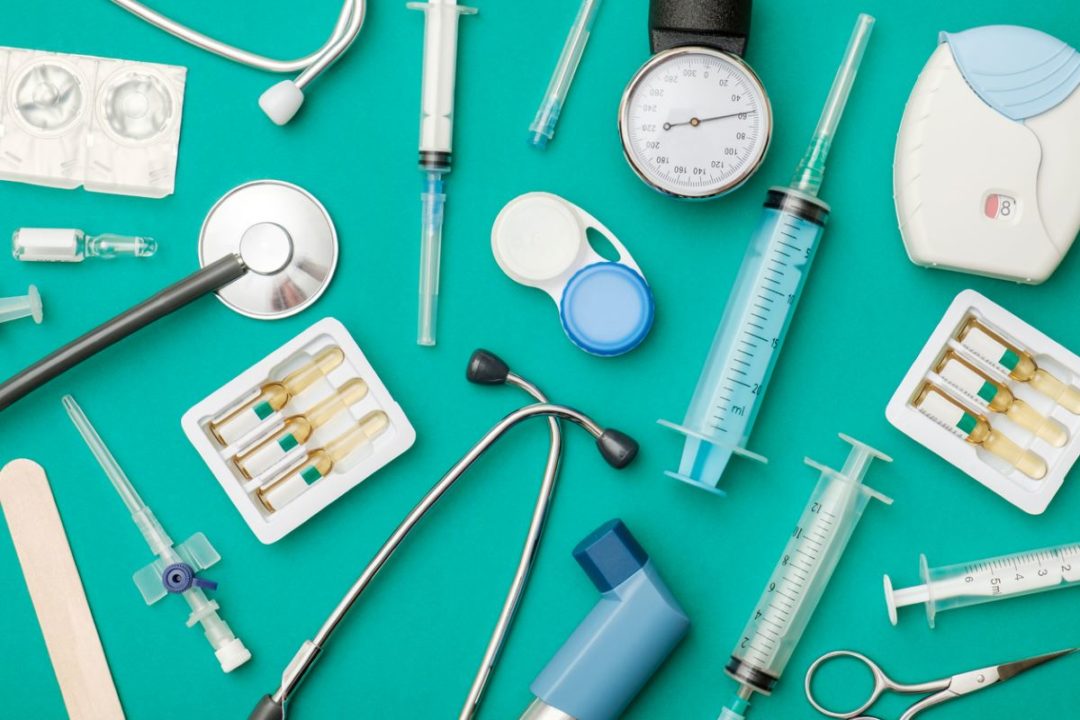
Visit Our Sponsors |
|
|
|
|
|
|
|
|
|
|
|
|
|
|
|
|
|
|
|
|
|
|
|
|
|
|
|
|
|
|
|
|
|
|
|
|
|
|
|
|
|
|
|
|
|
|
|
|
|
|
|
|
|
|
|
|
|
|
|
|
|
|
|
|
|
|
|
|

Photo: iStock.com/filistimlyanin
At some point, imperfections are likely to creep into every kind of manufactured product. But in the world of medical devices, there’s no margin of error. Does it make sense, then, to outsource production of those vital yet sensitive instruments?
Contract manufacturers have embedded themselves into nearly every industry, and the medical device sector is no exception. In fact, says Neal Walters, partner in the Strategic Operations Practice of Kearney, COVID-19 and other recent supply chain disruptions have only served to boost original equipment manufacturers’ (OEMs’) reliance on outsourcing.
Contract manufacturers, Walters says, “are becoming more of an end-to-end player” in the world of medical devices. That means getting involved in every stage from product design through final manufacture — and, in some cases, the logistics of delivery.
Medical-device makers that once insisted on in-house control over design and production are turning to outside partners that specialize in those very tasks, Walters says. In that respect, the industry is beginning to look more like the electronic components sector, where third parties have long been trusted to perform services that range well beyond basic manufacturing.
For their part, contract manufacturers may have no choice but to seek new business opportunities. Margins for the production of items such as laptops and smartphones continue to be squeezed, as the business becomes increasingly commoditized. It’s no wonder that contract manufacturers would turn to higher-margin segments such as medical devices.
Walters sees the rise of contract manufacturers in that industry as coming from two directions: large entities with the necessary scale but lacking special expertise in medical device making, and smaller niche players that specialize in those products yet lack scale. Both types are determined to extend their capabilities from the assembly line to include the full range of end-to-end supply chain services. “It’s a race to see who will win,” he says.
Either way, changing market dynamics are causing medical-device OEMs to seek outside help. A major factor is the speeding up of the product design cycle in the face of intensifying competition. What used to take three to five years now must be completed in a far shorter time, Walters says, and “a lot of legacy OEMs that have traditionally deliberate development processes recognize that they need to change."
All of this is taking place against a backdrop of rising demand, spurred by the abating of the pandemic. Medical procedures that were postponed by COVID-19 are now being scheduled, and suppliers must have product at the ready. Healthcare providers, meanwhile, expect to have visibility into the end-to-end supply chain, to ensure that their orders are being processed and inventory will be there when they need it.
The inherently complex nature of the industry makes that especially tough to achieve. Having true visibility means going beyond the tier-one supplier to include component, subcomponent and raw material providers, any one of which could be responsible for a glitch that brings the assembly line to a halt. What’s more, Walters says, OEMs need predictive capability, to be able to head off disruptions before they occur.
In an industry where responsiveness is critical, an extended offshore supply chain could prove to be a liability. But with the rise of contract manufacturers has come a reconsideration of global sourcing, Walters says. OEMs are beginning to shift some production from Asia to North and South America, if not the U.S. (They’re also eager to avoid the kind of disruptions that arose with the temporary shutdown of some Chinese factories at the height of the pandemic.) Costa Rica is proving to be an especially attractive site for near-shoring of medical-device manufacturing, he says.
Supplier diversification is also under consideration, as a means of mitigating the risk of sourcing too much product from a single contract manufacturer or part of the world. But Walters cautions that attempts to widen the sourcing net could create “a false security” for OEMs, if components from several tiers up the supply chain are still being made a single supplier.
“There might be five or six nodes in the manufacturing process for medical devices,” he says. “Just diversifying right before the end customer isn’t enough. It doesn’t provide risk-mitigation benefits to the [entire] supply chain.”
Walters believes medical-device OEMs will become even more reliant on outsourcing partners with the advance of technologies such as robotic-assisted surgery and sensors that monitor the performance of implanted devices. But with that development comes the need to protect designs and intellectual property. The transfer of data and the security of manufacturing facilities will become “very enhanced considerations,” he says, giving rise to more strategic relationships between OEMs and trusted contract manufacturers. “As lifecycles continuously get shorter,” Walters adds, “any compromise of IP becomes even more critical.”
RELATED CONTENT
RELATED VIDEOS
Timely, incisive articles delivered directly to your inbox.






